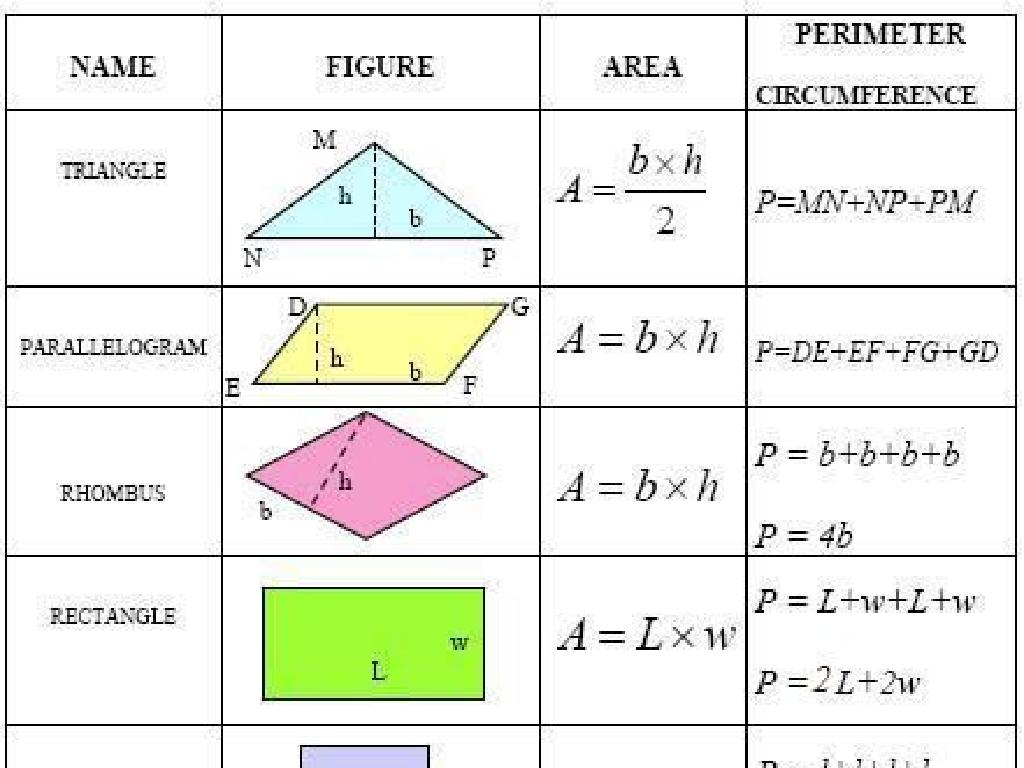Create And Interpret Line Plots With Fractions
Subject: Math
Grade: Seventh grade
Topic: Data And Graphs
Please LOG IN to download the presentation. Access is available to registered users only.
View More Content
Understanding Data: Line Plots with Fractions
– Visualizing data with line plots
– Line plots display data along a number line
– Today’s focus: Line plots with fractions
– We’ll learn how to represent fractional data points
– Line plots and their usefulness
– Useful for comparing data and spotting trends
– Interpreting fractions on line plots
– Learn to read and analyze fractional increments
|
This slide introduces the concept of line plots as a tool for visualizing data, with a special focus on incorporating fractions. Line plots are a simple yet powerful way to display data points along a number line, making it easier to compare and analyze information. Today, we will explore how to create line plots that include fractional measurements, which is particularly useful in scenarios where data is not whole numbers. Understanding how to interpret these plots is crucial for students as it enhances their ability to work with more complex data sets. Encourage students to think of real-life situations where fractions are used and how they could be represented on a line plot.
Understanding Line Plots with Fractions
– Define a line plot
– A visual representation of data on a number line
– ‘X’ marks on a line plot
– Each ‘X’ represents a data point in the set
– Line plots show data frequency
– Useful for seeing how often data points occur
– Line plots with fractions
– Fractions indicate parts of a whole in data sets
|
A line plot is a simple and effective way to display data, especially when dealing with fractions. It consists of a horizontal number line with ‘X’ marks above it, each representing a piece of data. When teaching students, emphasize that line plots are particularly useful for showing the frequency of data points. For fractions, line plots help visualize parts of a whole within a data set, making it easier for students to understand and interpret the distribution of fractional values. Encourage students to practice by creating their own line plots using data sets that include fractions, and to analyze the frequency of data points represented by each fraction on the plot.
Fractions on a Line Plot
– Fractions as parts of a whole
– A fraction like 1/2 or 3/4 shows a part of something complete.
– Representing non-whole data
– Data like 1 1/2 or 2 3/4 can show amounts that aren’t full numbers.
– Visualizing data with line plots
– Line plots display fractions on a number line to show frequency.
– Understanding distribution
– See how often different fractions appear in a data set.
|
This slide introduces students to the concept of using fractions on a line plot to represent and interpret data. Begin by explaining that fractions are a way to express parts of a whole, which is essential when dealing with data that includes non-whole numbers. Emphasize that line plots are a useful tool for visualizing the distribution of this type of data, as they allow us to easily see how often each fraction occurs. Encourage students to think about situations where they might encounter fractional data, such as measuring ingredients for a recipe or recording their heights. Provide examples of line plots with fractional data points and discuss how to interpret them.
Creating a Line Plot with Fractions
– Identify data for the plot
– Collect fraction data from a survey or experiment
– Set scale and intervals on number line
– Use fractions for scale; intervals must be equal
– Mark data points with X’s
– Each X represents a data point above its value on the line
– Interpret the plot
– Analyze the distribution and range of the data
|
This slide guides students through the process of creating a line plot with fractions. Start by identifying the data set, which could be the result of a class survey or a simple experiment. Next, determine an appropriate scale for the number line, ensuring that the intervals are equal and marked with fractions if necessary. Then, have students mark each data point by placing an X above the corresponding value on the number line. Finally, discuss how to interpret the line plot by looking at the frequency of data points, the range, and the distribution of the data. Encourage students to create their own line plots using data relevant to their interests and to practice interpreting the plots to understand the information they represent.
Interpreting Line Plots with Fractions
– Significance of each ‘X’ on plots
– Each ‘X’ represents a fraction of data on the plot.
– Counting ‘X’s to find totals
– Add up all ‘X’s to determine the sum of the data.
– Recognizing clusters and gaps
– Clusters show common data points, gaps indicate absence.
– Identifying outliers
– Outliers are data points that are significantly different.
|
When interpreting line plots, it’s crucial for students to understand that each ‘X’ represents a specific fraction of data, which is essential for analyzing the distribution. Teach them to count all the ‘X’s to find the total value represented on the plot. Discuss how clusters indicate a concentration of data around a particular value, while gaps show where data is missing. Highlight the importance of identifying outliers, as they can significantly affect the interpretation of data. Use examples like test scores or measurements in a class experiment to illustrate these concepts. Encourage students to practice by creating their own line plots with fractions and explaining their findings.
Class Activity: Fraction Line Plots with Shoe Sizes
– Collect class shoe size data
– Create a line plot with fractions
– Mark each shoe size on a number line, including half sizes as fractions
– Analyze the line plot
– Look for patterns, range, and outliers in the data
– Discuss plot observations
– Share insights on class shoe size trends
|
This class activity is designed to help students understand how to create and interpret line plots that include fractional measurements. Start by having each student measure their shoe size, including half sizes, which will be represented as fractions on the line plot. Once the data is collected, guide the students in creating a line plot on the board, marking each shoe size on a number line. Encourage students to analyze the plot by identifying patterns, the range of sizes, and any outliers. Conclude the activity with a class discussion on what the plot reveals about shoe size trends among classmates. This hands-on experience will solidify their understanding of line plots and fractions.
Practice Time: Creating a Line Plot
– Collaboratively create a line plot
– Use data from our fruit survey
– Survey results: favorite fruits of the class
– Mark fractions on the plot accurately
– Each x represents a fraction of the total votes
– Interpret the results together
– Discuss what the plot reveals about our preferences
|
This slide is designed for an interactive class activity where students will apply their knowledge of line plots and fractions. Begin by reviewing what a line plot is and how it can be used to display data. Use the data collected from a survey on the class’s favorite fruits to create the plot. Make sure students understand how to represent fractions on the line plot and ensure that they are marked correctly. Once the plot is created, guide the class in interpreting the results, discussing what the data shows about the group’s fruit preferences. This activity will help students to visualize and better understand fractions and how they can be represented in a data set.
Class Activity: Measure and Plot!
– Pair up and measure objects
– Record measurements accurately
– Use rulers to measure to nearest 1/4 inch
– Create a line plot with fractions
– Place the data on a number line with fractions
– Present findings to the class
|
This interactive class activity is designed to help students apply their knowledge of fractions and line plots in a practical setting. Students will work in pairs to measure various objects around the classroom to the nearest quarter inch. They will then record these measurements before creating a line plot to represent the data visually. Emphasize the importance of accurate measuring and recording. Once the line plots are created, each pair will have the opportunity to share their findings with the class, fostering a collaborative learning environment. Possible variations of the activity could include measuring to different fractions, comparing results among groups, or interpreting line plots created by others.
Conclusion & Homework: Line Plots with Fractions
– Congrats on mastering line plots!
– Homework: Measure 5 household items
– Use any items, like a book, spoon, or toy
– Create a line plot with your data
– Place the measurements on a number line
– Present your line plot in class
– Share your findings and explain your plot
|
Students have learned how to create and interpret line plots that include fractional measurements. For homework, they are tasked to find and measure five items around their home, record these measurements, and then create a line plot using this data. This exercise will help reinforce their understanding of line plots and give them practical experience with fractions. Encourage creativity in the items they choose to measure and ensure they understand how to scale their line plot appropriately. Tomorrow, students will present their line plots to the class, explaining their measurement process and how they interpreted the data. This will also enhance their speaking and presentation skills.






